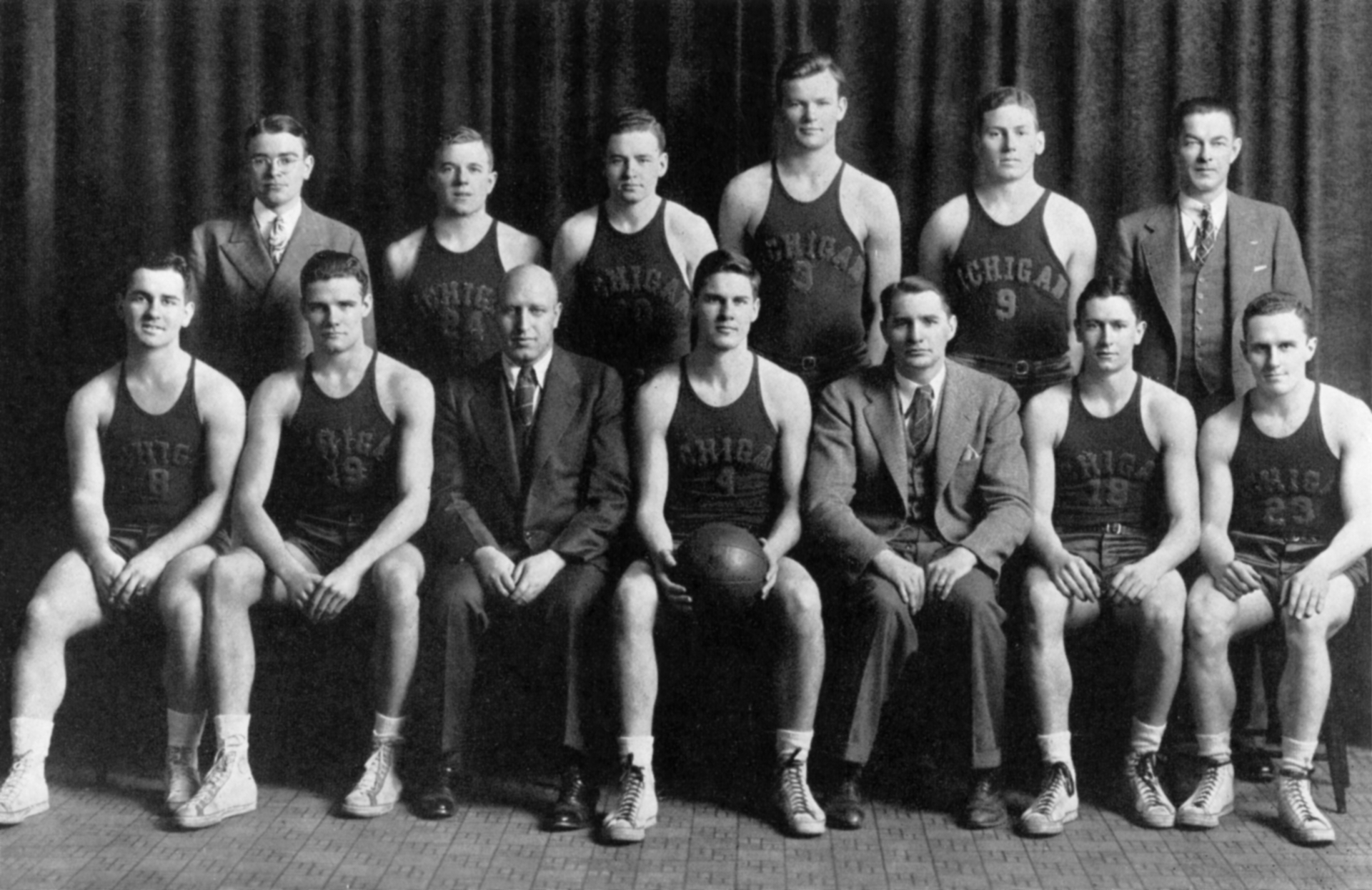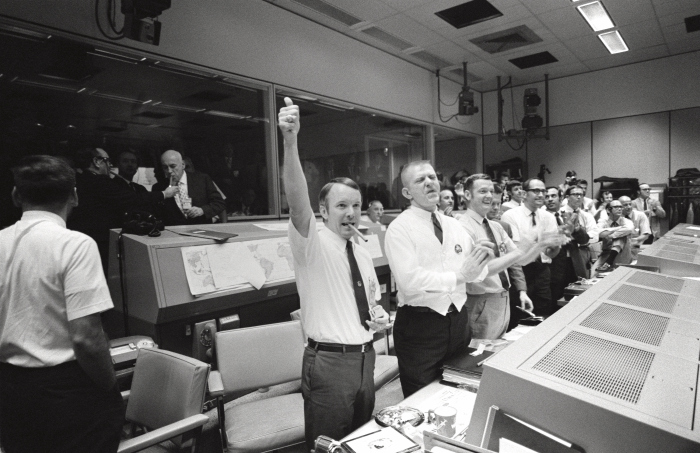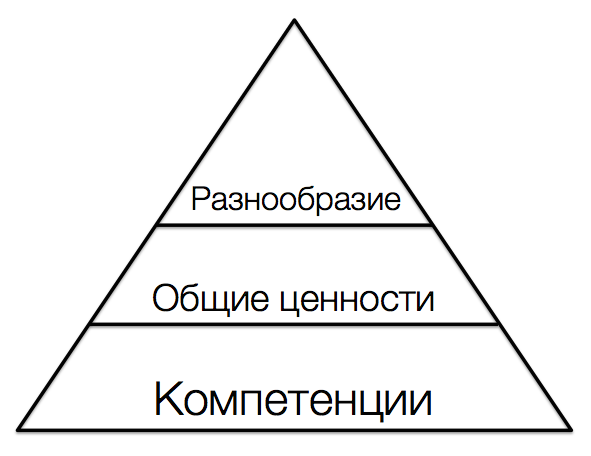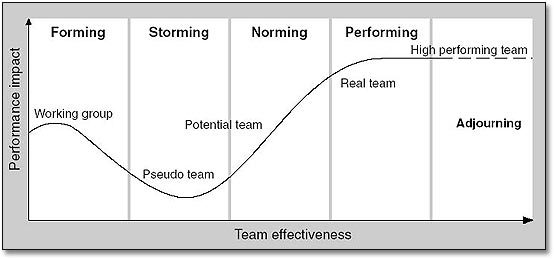Teams and their typology. How to build a self-organizing team?

A business in which everything is going according to plan, and employees solve the tasks set for them and successfully bypass all problems without the involvement of management — the ideal that many companies strive for. Today we will talk about how all this can be achieved.
Team Team
In order to start actively moving towards self-organization, it is necessary first of all to assess the current situation. And to begin to answer the question: how is the work of people in groups organized within your business? All formats of organizing people into working groups or teams can be divided into four types.
')
The first type: visionary group. In such a group there is a clear leader who inspires and inspires everyone. Such a group can be called a startup, where there is a clear leader who is the carrier of the idea and infects everyone with its energy. The disadvantage of this type of organization is that as soon as the leader leaves, everything falls apart, because everything rests solely on his energy. With all its external exoticism, this is a fairly common type of organization.
And yet not the most common. The most popular in domestic realities is the second type of organization - the hierarchy. A characteristic feature of such an organization is a clearly defined boss. The boss has subordinates, subordinates also have subordinates, and so on. This type is characterized by a complete division of responsibility. If a unit in this hierarchy has its own area of responsibility, it is usually strictly regulated, and it is the department that is responsible for the implementation of these regulated functions.
It would seem, everything is strict and logical. However, if a task requires consistent participation of several departments at once, responsibility for the result may be blurred, since there is no one who is responsible for the entire process at once. And even if such a person is still there, each individual performer often does not see the result as a whole, which means that he does not know how to improve it (and sometimes he cannot do it: deviation from official duties in such companies is not particularly welcome).
Work in the hierarchy is quite dull and dull. In such schemes of motivation simply nowhere to take - a person does his job, and nothing more. Most often, in an attempt to artificially recreate it, management replaces the notions of motivation and stimulus (primarily monetary). Motivation is the arising desire of a person to do his job, since it is interesting to him. There will be no interest here, because the result is not visible, and the sense of meaning in relation to their work disappears. Therefore, managers are trying to somehow stimulate employees with money.
Another type of organization is an expert group. Each of the employees within such an organization is an expert in their own narrow field, and there is a coordinator who is trying to bring everything together. The difference with the team (the fourth type) will be in the format of the relationship. Experts are not interested in what others are doing. They consider themselves to be rather important and status people, irreplaceable employees. At the same time, they do not allow anyone into their zone and do not try to get into the competence zone of other people. And every individual expert does not take responsibility for the result entirely. Therefore, in such a situation, a centralized management style is needed, in this case it is implemented by a coordinator, who should reduce everything to a single result.

The last type is a command. It is characterized by a common goal and shared responsibility. This means that the team does not expect the performance of certain functions from specific people - they expect the implementation of the task entirely. There are no strictly regulated processes and frameworks of employees' responsibility in the team; team - a single unit. This approach leads to the fact that responsibility is not shared between people: each team member is responsible for the entire result. The consequence is mutual aid. If suddenly someone fails or goes wrong, and the team members see it, they start helping each other: this is a common cause, and everyone has an interest in a positive result.
In our practice, the following case was repeatedly met: a functional division is created in the company, when programmers work separately from testers and analysts. Programmers go about their business and request the necessary requirements. Analysts write requirements and try to “shake” code from programmers as soon as possible. As for testers, even if they are not enough, no one will help them, as they do not allow themselves to be helped. If they miss a bug, they are reprimanded by their superiors. This is a typical picture that occurs in functional units. We recommend that such organizations be brought together as a team of analysts, developers, testers and set the task of developing specific functionality. Then people start to communicate differently with each other: they have a common goal.
How and from whom to assemble a team
It is worth starting, of course, with the definition of the competences necessary for the solution of the goal and the selection of employees who possess these competencies. This is the “base” level, from which all further work on team building is being built: if this item is not fulfilled, the rest simply will not make sense - the assembled team will not be able to complete the task assigned to it.
Having gathered a group of people with the required competencies, you should try to study their values and beliefs. Every person has an attitude regarding how everything in the world works. Most of them are based on past experience. At the same time, each person has beliefs that he is ready to drop if the situation demands it, and there are basic beliefs or values. Values are those beliefs with which a person is not ready to part, even if the situation requires. Therefore, if people with value conflicts turn out to be within the same team, then conflicts in it will be insoluble.
When selecting people, you need to ensure that value conflicts between them do not arise. For example, there is a person who does not want to write automatic tests. And for all attempts to convince him that they need to be written, certain standards must be observed, he answers that he does not need it. But other people work with its code, and they cannot do without it. Because if there are no autotests, they make too many mistakes. However, it is not possible to convince a person because he believes that this is nonsense and a waste of time. It is very difficult to work with such a person to his colleagues. This is an example of value conflict.

If you are sure that there are no value conflicts in the group, you should proceed to the final stage: assessment of the differences existing between the group members (in tastes, temperament, etc.). Such differences lead to what is called synergy. A variety of opinions and points of view allows you to find the best quality solutions. Although in practice there is often an opposite situation, when for a manager one of the unofficial selection criteria is how much a person resembles himself (in temperament, in relation to any issues, in interests, etc.).
Here, as in many other areas, you need to try to keep a balance: on the one hand, not to recruit people with pronounced value conflicts, on the other hand, to support the formation of teams from employees with different interests and temperaments. In general, this approach can be depicted in the form of a pyramid: the necessary competencies lie at the base, the general values are at a higher level, and the variety of points of view necessary for the synergistic effect completes the pyramid.

Conflict is inevitable
It would seem that if a team consists of people with the same values, there should be no conflicts between them: on the main issues, they all hold the same opinion, while other beliefs can be easily abandoned. Alas, this is not so: within the framework of a self-organizing team, conflicts are inevitable. The fact is that conflict is the mechanism through which people come to some one, probably the best solution. Of course, this does not happen easily. As a team gets older, people get used to each other, and conflict situations are resolved more quickly.

Takman model
Model Takman explains the stages of the life cycle of the team. The first stage is “shaping”, creating a team. At this stage, employees look to each other and do not come into direct conflict, because they do not know who they are dealing with. The second stage is called “storming” - the wave of conflict reaches its peak, and people begin to divide the zones of influence. The third stage is “normalization”: the roles are distributed, and people work out the open and tacit rules of interaction, understanding the expectations of the team. “Performing” is when everything is formed, the roles are divided, and the team can fully concentrate on solving their work tasks.
Understanding this model and identifying the phases of a team’s life cycle according to it is important for several reasons:
- It is much easier to go to the "storm", knowing that the deliberate avoidance of conflicts will not allow you to move forward: this way you will simply get stuck in the "forming" phase.
- When you are already in the “storm” phase, it is important to understand: this stage will end sooner or later, it is not only inevitable, but also extremely necessary - without going through this phase you will not go on to the next one.
- Given this circumstance (p.2), it is much easier to survive not only the peak of conflicts, but also the attendant drop in productivity. Moreover, with such an approach, it can be foreseen and the current tasks adjusted in advance based on the inevitability of the “storm”.
The effective work of the team depends on the compliance of the goals and objectives with its current state and capabilities. For example, if a team consists of young, inexperienced programmers, the goal of analyzing the marketing aspects of a product will be difficult for them. This goal is suitable for more experienced employees who understand the structure and objectives of your business. When the goal does not correspond to the level of the team (due to lack of competence or level of maturity), the team demotivates it. On the other hand, in order to maintain morale, the level of the goal must be constantly raised taking into account who is in the team and what these people are ready for.
Involvement in the workflow is easy to implement with the help of facilitation - organizing a meeting with an understandable task, for example, planning a release. All those invited to the meeting are participants in the process, interested parties, and we need to decide what will be included in the next release. Developers do not always engage in such a discussion, but this is exactly what needs to be done - we involve each participant in the workflow so that he can contribute. Thus, people not only sit and “saw” their work tasks, but also participate in the overall value creation process at the stage of release, product design, etc. Self-organizing teams very quickly adopt this scheme of work and begin to conduct such discussions on their own.
Source: https://habr.com/ru/post/291784/
All Articles